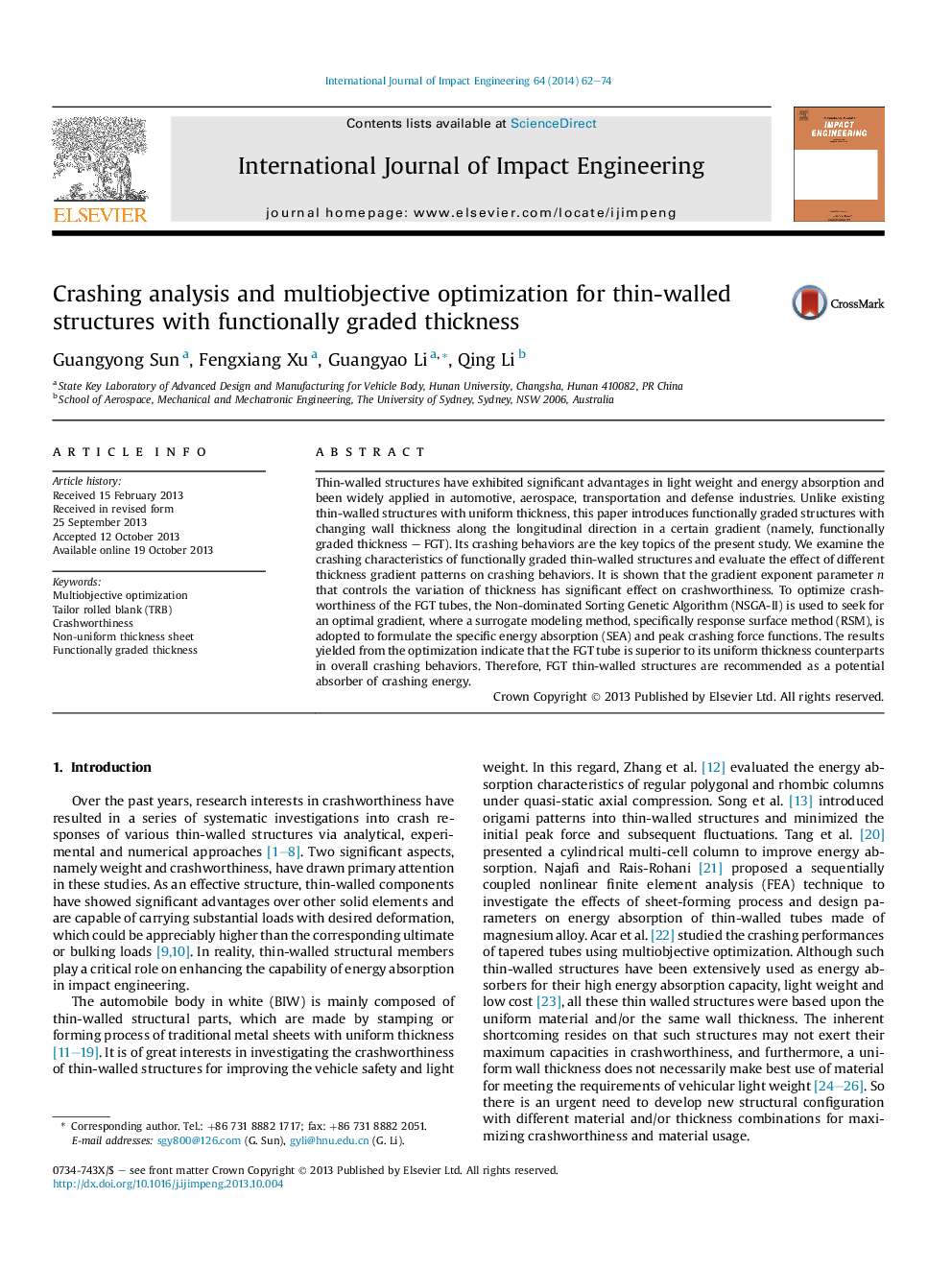| Article ID | Journal | Published Year | Pages | File Type |
|---|---|---|---|---|
| 7173206 | International Journal of Impact Engineering | 2014 | 13 Pages |
Abstract
Thin-walled structures have exhibited significant advantages in light weight and energy absorption and been widely applied in automotive, aerospace, transportation and defense industries. Unlike existing thin-walled structures with uniform thickness, this paper introduces functionally graded structures with changing wall thickness along the longitudinal direction in a certain gradient (namely, functionally graded thickness - FGT). Its crashing behaviors are the key topics of the present study. We examine the crashing characteristics of functionally graded thin-walled structures and evaluate the effect of different thickness gradient patterns on crashing behaviors. It is shown that the gradient exponent parameter n that controls the variation of thickness has significant effect on crashworthiness. To optimize crashworthiness of the FGT tubes, the Non-dominated Sorting Genetic Algorithm (NSGA-II) is used to seek for an optimal gradient, where a surrogate modeling method, specifically response surface method (RSM), is adopted to formulate the specific energy absorption (SEA) and peak crashing force functions. The results yielded from the optimization indicate that the FGT tube is superior to its uniform thickness counterparts in overall crashing behaviors. Therefore, FGT thin-walled structures are recommended as a potential absorber of crashing energy.
Related Topics
Physical Sciences and Engineering
Engineering
Mechanical Engineering
Authors
Guangyong Sun, Fengxiang Xu, Guangyao Li, Qing Li,
